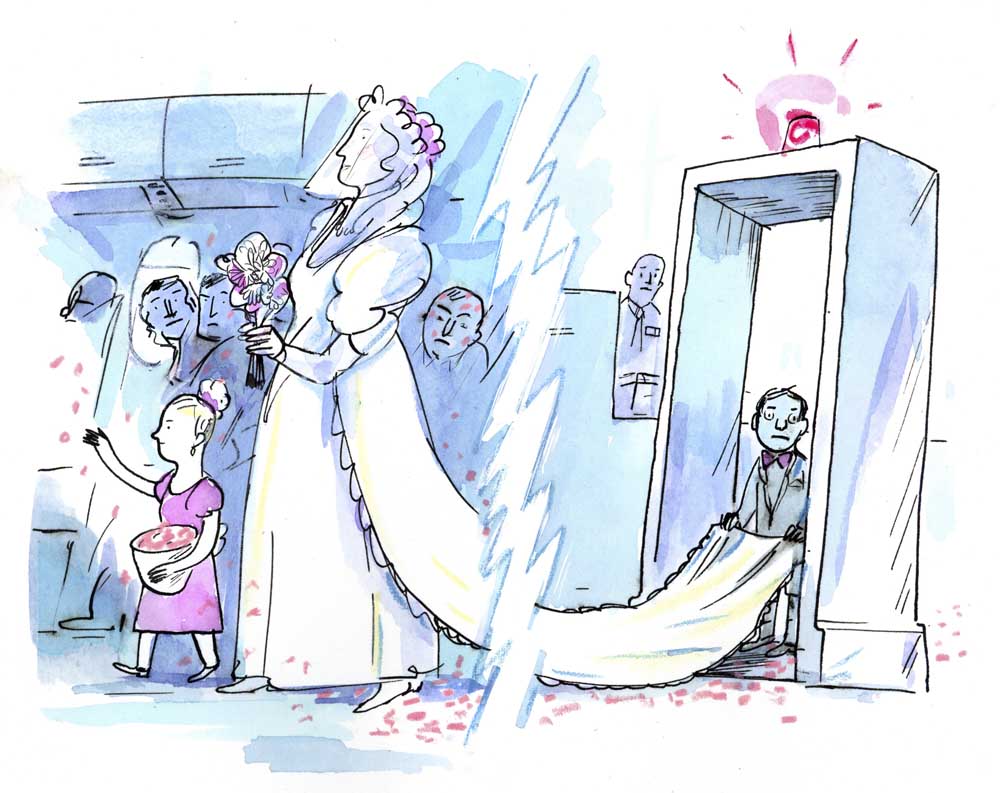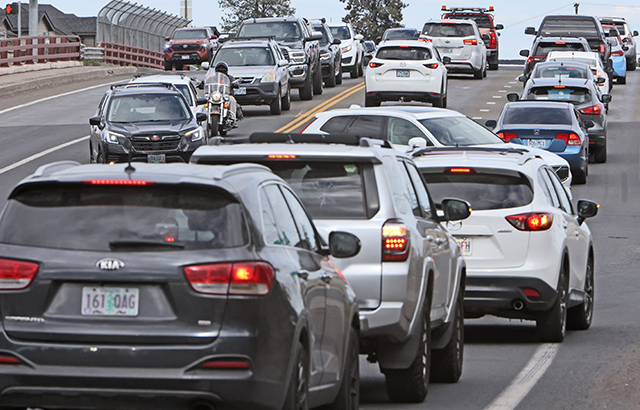Having a destination wedding? Take precautions to protect your dress
Published 12:00 am Sunday, May 29, 2016

- Graham Roumieu / The New York TimesBeing aware of restrictions, rules and regulations when flying with a precious garment while planning a destination wedding can help to save headaches and heartbreak.
How do you take a wedding dress on a plane?
What if you bought honeymoon tickets under your maiden name but now have a new surname?
Trending
Such are the practical questions that arise when planning a destination wedding and honeymoon. For answers, you could try trawling online wedding boards where members have diamond ring avatars and plenty of opinions. But if you prefer not to take advice from handles like GlamBride4Ever or TheFutureMrsJones, here instead is the lowdown from U.S. Customs and Border Protection, the Transportation Security Administration, and major airlines.
Let’s begin at the security checkpoint.
Mike England, a national spokesman for the TSA, said in an email that there are no rules specific to wedding dresses. A post on the agency’s blog suggests that the fastest way to get a wedding dress through security is obvious: Make sure it can lie flat in a bag that can fit through an X-ray machine.
“If it can’t, our officers can screen the dress manually,” the blog says, “but this will require opening the garment bag. Rest assured that our officers will use gloves for the alternate screening to avoid damaging the dress.” Allow yourself extra time for that.
Now there’s the matter of storing your dress on the plane. The airlines want to help. If the plane has a closet, and if there’s room, a flight attendant may be willing to hang the dress inside. If the overhead bin above your seat is full but there’s space somewhere else, the attendant may place it there. However, airlines don’t offer guarantees.
“Our crews will do their best to accommodate a bride with their wedding dress,” said Ross Feinstein, a spokesman for American Airlines. “We know it’s an important day in their lives.”
Trending
Yet there are multiple variables involved. For example, Feinstein said some planes don’t have closets. And even if the plane you were supposed to fly in has a closet, the plane could end up being swapped out at the last minute for one that doesn’t. Or, in a different situation, there may be a closet but there may also be passengers on board whose, say, wheelchairs need to be stowed inside.
So here’s a good rule of thumb: If you want your dress in the cabin with you, make sure it can fit into an overhead bin. JetBlue, for instance, doesn’t make special allowances for wedding attire. On Southwest Airlines, as with most other airlines, wedding dresses must adhere to the one-personal-item-and-one-carry-on policy. They are typically packed in a garment bag (one that complies with the airline’s carry-on requirements) and laid flat over roller bags in the overhead bins.
“We have had customers purchase an extra seat if the dress is too big to fit in the overhead compartment,” Melissa Ford, a spokeswoman for Southwest, said in an email. “Personally, I flew with my wedding dress five years ago and found that by letting flight attendants and nearby customers know that I was carrying precious cargo in the overhead bin, they were happy to help me out and look for storage space elsewhere.”
United Airlines said its gate agents often accommodate customers traveling with a wedding gown as an approved carry-on item as long as there’s space in the plane. “When packed in a garment bag, to protect the dress,” Jonathan Guerin, a spokesman for United said in an email, “it can usually be stowed safely (and away from any spills!) in the overhead bins.”
To make the process smoother, Delta Air Lines suggests speaking with a gate agent once the plane arrives to find out if someone is able to help find a spot for the dress. If you’re flying out of one of Delta’s United States hubs, you may be able to use its “early valet” program, which it piloted over the summer: staff members take your carry-on bags before you board and put them in the bin above your assigned seat. The service is free though available only on certain routes during popular travel periods, such as summertime and holidays.
If the prospect of slipping your dress into an overhead bin is distressing, consider shipping it with a service that offers tracking and insurance.
For those who change their surname, questions about traveling with a dress are soon supplanted by questions about traveling with a new name. What if you already bought plane tickets for your honeymoon in your maiden name? Should you pay to expedite a new passport?
Trying to change your name on all of your identification while also planning a wedding and honeymoon will only turn the heat up on an already busy time. It will also cost you money. Want a new passport lickety-split? The expedited service fee is $60. Overnight delivery, which the State Department strongly suggests, is $20.66. And if more than a year has passed since your passport book was issued, there is also a renewal fee of $110. (If you’re a member of Global Entry, when you renew your passport you will also have to make an appointment to visit a Global Entry enrollment center and update your information.)
And then there’s the cost you can’t put a price on: your time. To update a United Airlines frequent flier account with a new name after marriage, for instance, you must upload a copy of your marriage certificate and then allow up to two weeks for the airline to process the change. Hey, at least you can do it online.
Other airlines, including Delta, require members of their loyalty program to send a copy of their marriage certificate, divorce certificate or court order by mail or (gasp!) fax along with their frequent flier number to make a name change.








